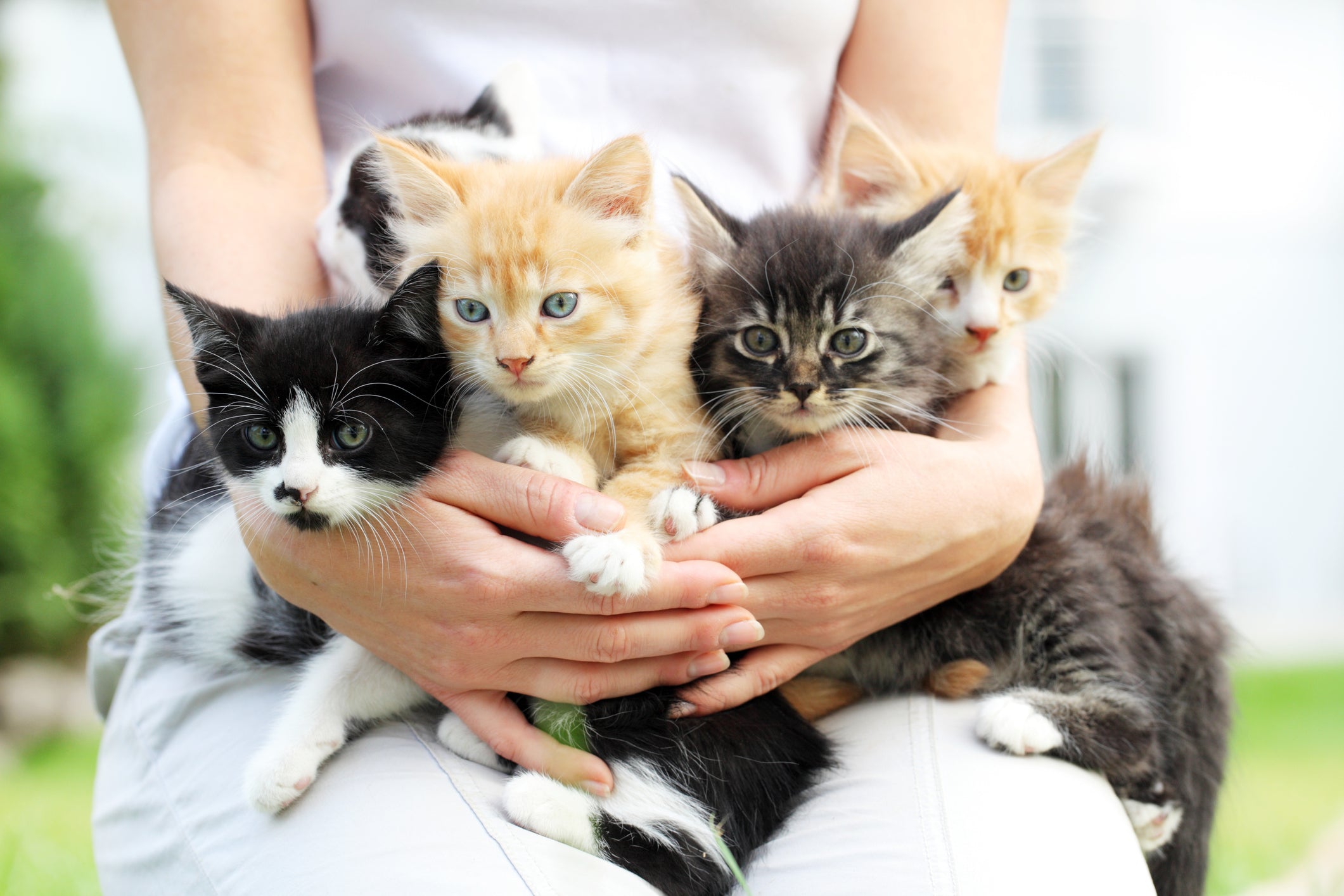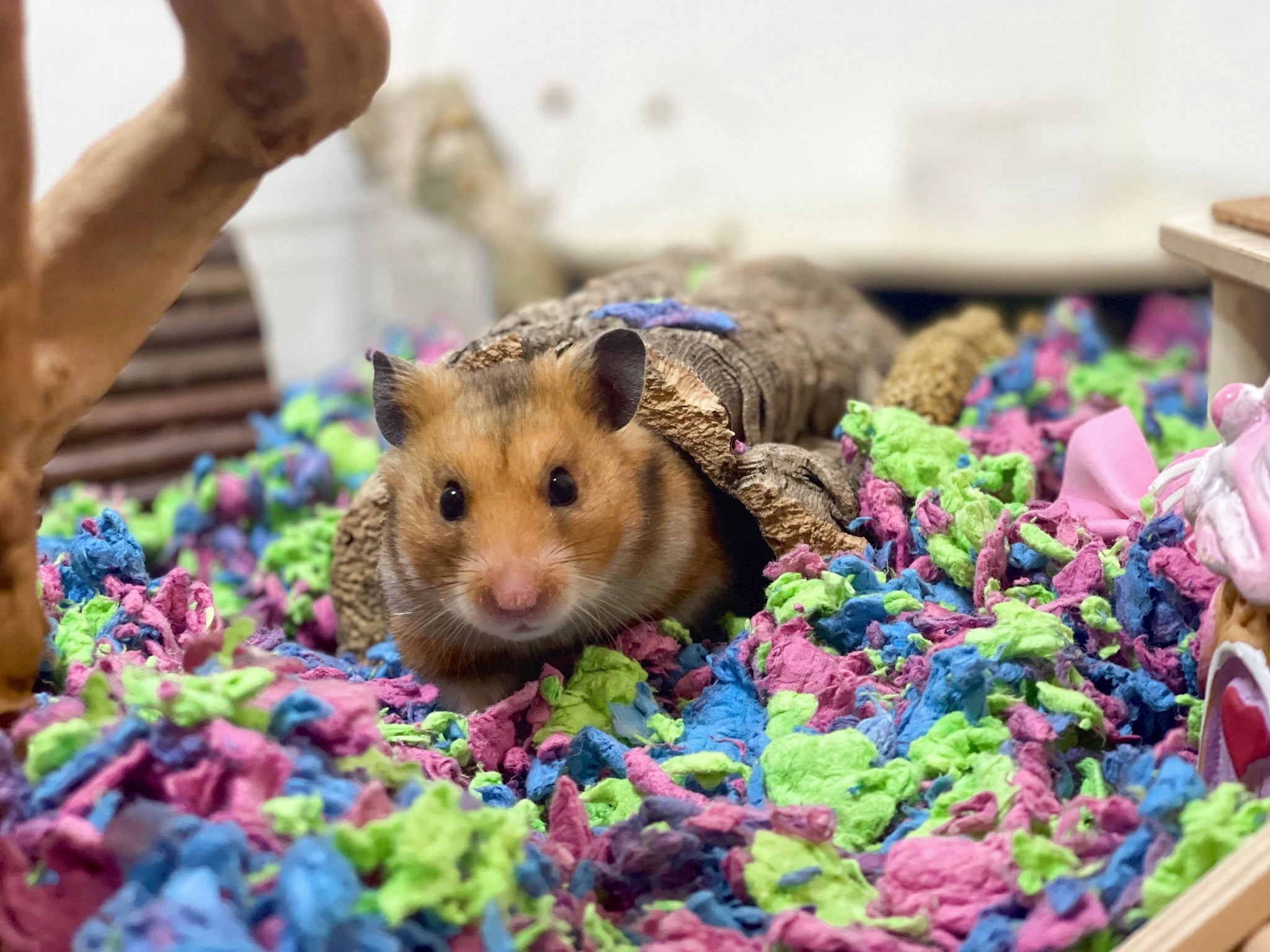How to Easily Reduce Your Pet's Carbon Pawprint
April 22nd is Earth Day, our yearly reminder to reflect upon how our actions impact the planet. However, as pet parents, we need to also think about how we can reduce our pet’s carbon pawprint. How can we ensure that our pet is eco-friendly?
Waste Management
Anyone who has ever had a pet knows that pets make lots of waste. Whether you are picking it up, or scooping it, it is estimated that 10 million tons of waste from pets fill landfills every year. How can we make a difference? If you have a dog, use biodegradable poop bags instead of plastic bags to pick up your dog’s poop. Even better, use an in-ground waste disposal system. In-ground waste disposal systems are mini septic systems that allow you to dispose of your dog’s waste right in your back yard. There are several companies that sell kits you can buy to create your own environmentally-friendly dog waste disposal system. If you have a cat, switch from a clay-based litter to a biodegradable litter like ökocat to cut down on the estimated 2 million tons of clay litter that end up in landfills yearly. Learn how to compost ökocat litter here.
Don’t Pollute
Always pick up after your pet. Besides being inconsiderate, leaving your pet’s waste behind can pollute water sources from runoff. Follow the backpacker’s motto and pack out what you pack in and leave only footprints (or pawprints) behind.
Buy Green
Buying green can include purchasing products made from recycled or sustainable materials, or buying products that are chemical-free. Nowadays, you can buy beds made from reclaimed memory foam scraps and recycled plastic water bottles, or leashes and collars made from sustainably grown hemp. You can purchase ökocat litter that is made fragrance and chemical-free. Buying chemical-free products is not only good for the environment, but better for you and your pet. Read more going green tips
Buy in Bulk
Buying pet food and pet supplies in bulk not only saves money, it also conserves fuel and lowers emissions by saving you extra trips to the store.
Pet Overpopulation
Make sure your pet isn’t adding to the pet over-population problem by having your pets spayed or neutered.
Adopt a Shelter Pet
Don’t forget about your local animal shelter if you are thinking about getting a pet. There are lots of “recycled pets” that need a good home. While adopting one of these deserving pets may not lower emissions or save fuel, it can save a life. By adopting these simple tips, you and your pet can live green and make the planet a better place.
Read MoreVet Tips for the Best Guinea Pig Care
Guinea pigs make great pets, especially for first time pet owners. They are friendly, hardy, relatively easy to take care for, and have adorable personalities. If you are thinking about getting a guinea pig, what will you need to have? Guinea pigs need: housing, pet supplies, food, toys and of course, lots of love and attention.
Housing
First and foremost, your piggy will need a place to call home. When picking a habitat for your pig, the most important consideration is getting the right size for the enclosure. Unlike smaller rodents, guinea pigs need more space. According to the Humane Society, the minimum size for one guinea pig is 7.5 square feet (30” x 36”), but bigger is better. The minimum size for two guinea pigs is also 7.5 square feet, but 10.5 square feet is preferred (30” x 50”). Guinea pigs should also be housed in a home with a solid bottom. Avoid cages with wire bottoms as these can harm their feet. Ideally choose a habitat made for guinea pigs as these often have ramps and second levels made especially for guinea pigs. The cage needs to be large enough to have a hut for your piggy to hide and sleep in. You can buy plastic guinea pig huts or use a small upside-down cardboard box as well. You also want room for tunnels and other play toys, and of course, your sturdy ceramic food and water bowls. Most cages made for guinea pigs have removable bottom trays that allow for easy cleaning.
Midwest makes a good size guinea pig habitat and you can add on more for additional space.
In addition to the habitat, you will need bedding to cover the floor. You can use recycled paper products, aspen chips, and wood pulp products, such as carefresh®. carefresh® is ideal for guinea pigs because it is twice more absorbent than shavings, can suppress odors for up to 10 days, is 99% dust-free, and is soft and comfortable. Newspaper is not ideal since it is not very absorbent and needs to be changed frequently. Cedar and pine shavings are not recommended because they can cause respiratory problems. Corn cob products are also not recommended as they can be ingested leading to obstructions. No matter which bedding you ultimately chose, the bedding needs to be changed regularly to keep the cage clean and odor-free.
Finally, your guinea pig needs an “igloo” or hut to hide or sleep in. Guinea pigs like to have a hiding place where they can feel secure. Can you blame them for wanting some privacy?
Food
Guinea pigs need three food essentials: guinea pig pellets, hay and fresh fruits and veggies. Pick a high-quality guinea pig pellet and make sure it is always accessible to your piggy. While pellets are a major part of their diet, they also need to have fresh hay every day. You can choose from Timothy Hay, alfalfa, or other grass hay varieties made for guinea pigs. Hay is necessary for their intestinal health and to help prevent their teeth from overgrowing. Guinea pigs also need fresh fruit and vegetables every day. Guinea pigs require a dietary source of vitamin C as they lack the enzyme required to synthesize Vitamin C. Without a daily source of vitamin C, they can develop scurvy from vitamin C deficiency. Foods such as parsley, cilantro, kale, spinach, broccoli, and peppers, beet greens and tomatoes contain high levels of vitamin C. While fruits are also a good source of vitamin C, they should be offered only in small quantities as treats due to their high sugar levels. Vitamin C can also be added to your guinea pig’s water. Finally, don’t forget to provide clean water in a either a bowl or water bottle. Water bottles are preferred since they stay cleaner longer and can hold a lot of water.
Toys
Like other animals, guinea pigs like to play with toys. Guinea pigs like to play with balls, bells, and stuffed animals, but chew toys are by far their favorite. There are a number of different wooden chew toys you can clip to their cage. Guinea pigs also like cardboard tunnels. Not only are they fun to chew, but they also provide a hiding place and are fun to push around. Consider getting an exercise pen so your guinea pig can get some exercise and safely explore outside of their cage. Make sure to avoid exercise wheels and balls. Guinea pigs’ have different anatomy than smaller rodents and their spines are unable to bend backwards. Exercise wheels and balls can cause severely back injuries. Remember, guinea pigs are social animals and they simply enjoy your company and being petted. You can tell they are happy by the cute sounds they make when they are being loved.
Pet Care
Like other rodents, guinea pigs have teeth that grow continuously. In order to prevent their teeth from becoming overgrown, they have to wear down their teeth. This can usually be accomplished by providing them with hay at all times, chew toys, and cardboard tunnels. If their teeth become overgrown, they may be unable to eat and will need to see a veterinarian. In addition to their teeth, guinea pigs need to have their nails trimmed every few weeks. Without regular nail trims, their nails can get overgrown and become painful. If your guinea pig is of the long-haired variety, it will need to be brushed regularly to prevent matting.
Guinea pigs are social animals and generally do well with other guinea pigs. If you decide to get more than one guinea pig, make sure they are of the same sex. Otherwise you will end up with a household full of guinea pigs. Finally, although guinea pigs are relatively hardy, they are curious and can get themselves in trouble. Keep an eye on your guinea pig and make sure that they don’t chew on electrical cords, eat something they shouldn’t, or fall and injury themselves.
Lastly just like cats and dogs, it is ideal for guinea pigs to have annual check-ups. If you don’t already have a veterinarian be sure you choose one that sees guinea pigs and make an appointment to bring your new piggy in for a wellness check right away.
If you’ve decided to get a guinea pig, keep these suggestions in mind and buy the supplies you need to welcome your new guinea pigs home.
Read MoreFilter - Key Words
- bedding
- biodegradable
- Bunny
- carefresh
- cat health
- cats
- CritterCare
- dog
- ferret
- fostering
- Guinea Pig
- habitat
- hamster
- health
- Healthy Pet
- kitten
- litter
- ökocat®
- paper bedding
- pets
- Rabbit
- safety
- small animal
- small pet
- sustainable
- Vet
- Veterinarian
Dr. Ruth MacPete

aka Dr. Ruth, The Pet Vet
“I am passionate about pet care and educating pet parents about making Earth-friendly choices, and I admire Healthy Pet for making products that are good not only for your pets, but also your family and the environment.”
Visit the Pet Vet






